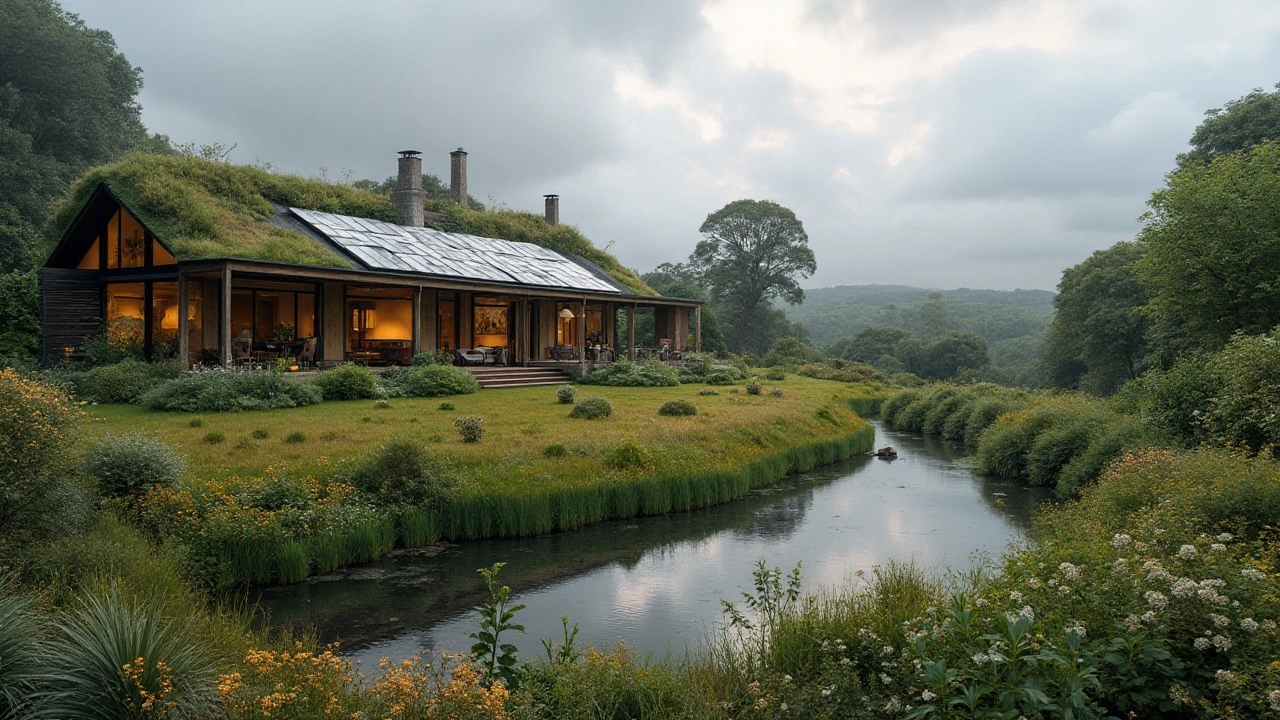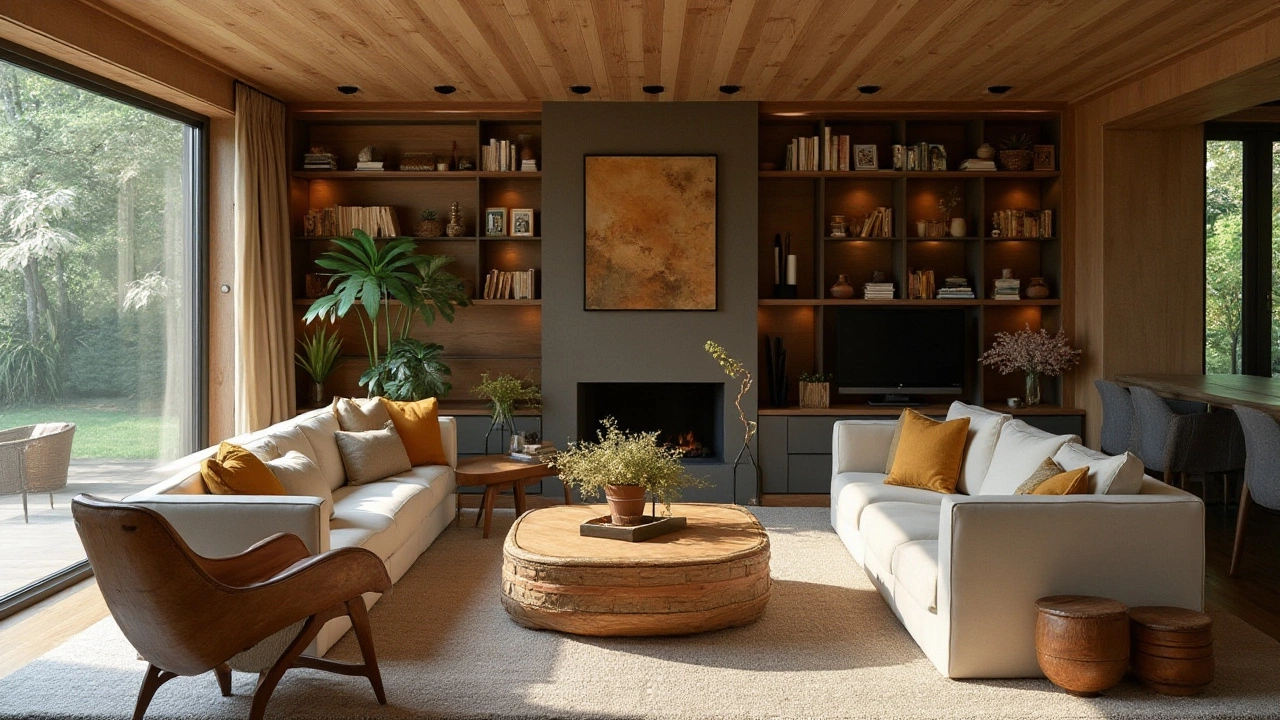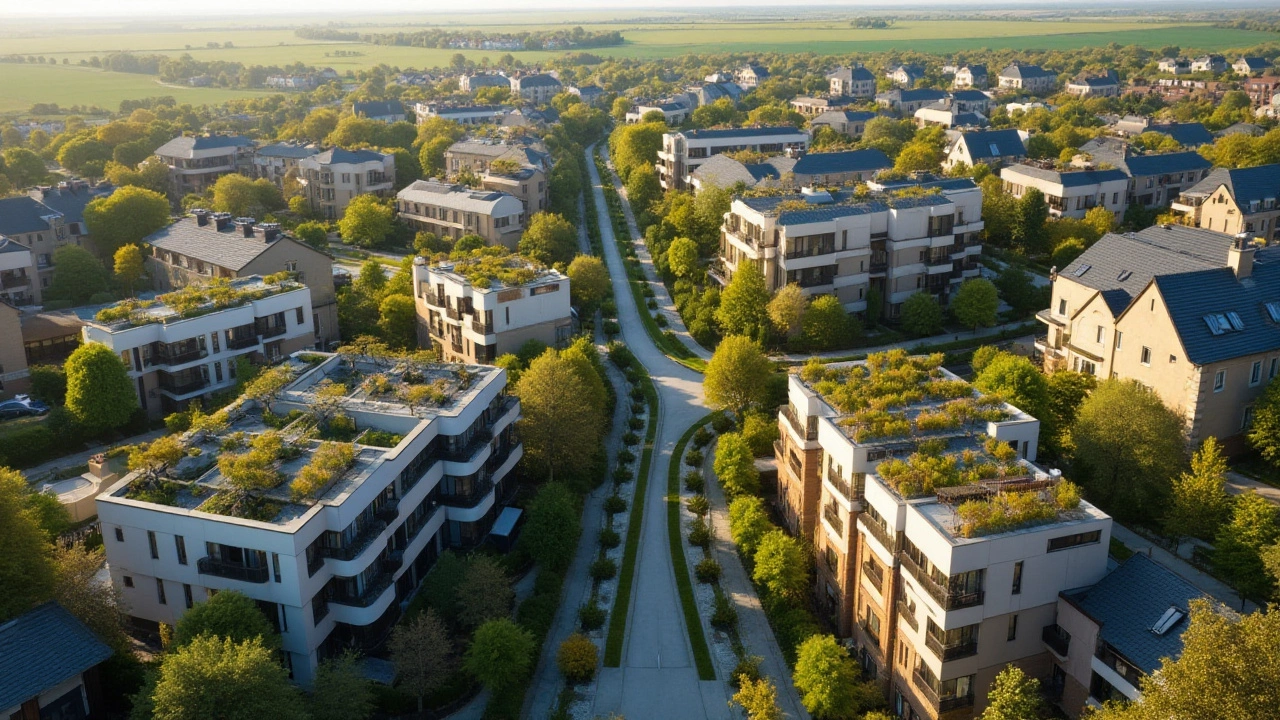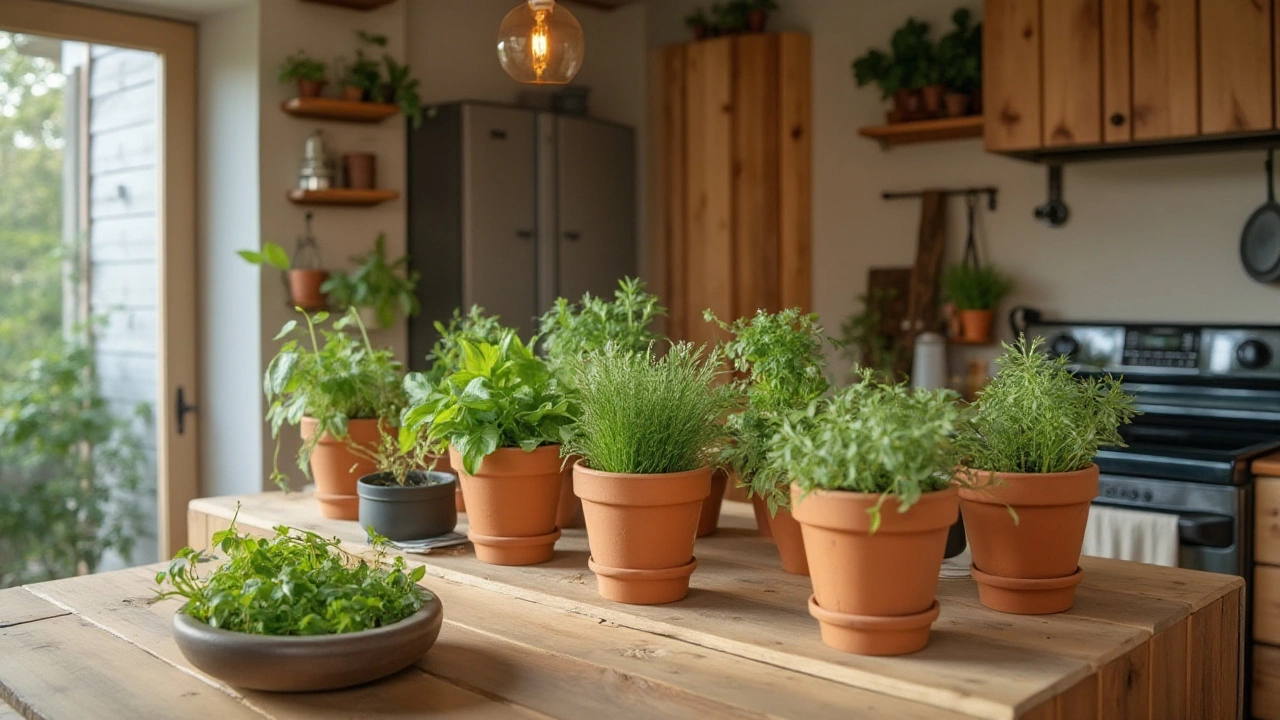Exploring the Most Expensive Eco-Friendly Homes
 Oct, 14 2024
Oct, 14 2024
The allure of living in harmony with nature while enjoying the finest luxuries is captivating more homeowners who are choosing eco-friendly homes. These residences go beyond just being kind to the planet, they redefine what it means to live sustainably without compromising on comfort or style.
These aren’t your standard homes. They boast impressive architecture and innovative technologies designed for minimal environmental impact. From rainwater harvesting systems to solar panels, every aspect is thoughtfully curated to ensure a low carbon footprint, while amenities cater to the discerning tastes of the eco-conscious elite.
Join us on a journey through some of the most expensive eco-friendly homes in the world. Learn about the extravagant yet sustainable features that set these properties apart and gather inspiration for your own abode. Whether you're dreaming of a green mansion or simply seeking ways to make your home more eco-friendly, there's plenty to explore.
- Defining Eco-Friendly Luxury
- Notable Features of High-End Green Homes
- Case Studies of Expensive Eco-Homes
- Tips for Affordable Sustainable Living
Defining Eco-Friendly Luxury
When we talk about eco-friendly luxury, we're diving into a realm where sustainability meets opulence, crafting an experience that is as kind to the Earth as it is to the senses. These homes are not just about cutting down on carbon footprints; they are about creating a lifestyle that fuses nature with high-end living. At the heart of these homes is a commitment to using sustainable and often locally sourced materials, such as reclaimed wood, bamboo, and recycled metals, each lending a unique narrative to the home’s architecture. These elements tell a story of thoughtful design while ensuring minimal impact on natural resources.
The essence of luxury in these spaces comes from innovative design features that prioritize the environment without compromising on aesthetics. Large windows aren't just for show – they are strategically placed to maximize natural light, reducing the need for artificial lighting and also providing breathtaking views of the surrounding nature. As sunlight streams through, it creates a warmth that enhances the natural beauty within these homes. Incorporating solar power goes beyond just installing a few panels; it involves cutting-edge energy systems that harness the sun throughout the year, with homes sometimes even feeding energy back into the grid.
Cutting-edge technology is another hallmark of the most expensive sustainable cottages. Smart home systems control everything from temperatures to lighting with precision, ensuring optimal energy use and comfort at all times. Some homes feature geothermal heating, using the stable temperatures underground to regulate home temperatures in an eco-friendly manner. For water conservation, advanced systems collect and reuse water, providing sustainable solutions to modern living demands. "Living in a truly sustainable home means accepting responsibility for our impact," says architect Lisa Whitaker, who designs homes where luxury and sustainability coexist seamlessly. Her projects often include vertical gardens that purify the air, adding another layer of luxury in terms of health and wellness.
These homes also often include bespoke features that make them unique. Rooftop gardens serve as both insulation and aesthetic retreats, reducing the urban heat island effect and creating a personal oasis in the sky. Some properties boast their own orchards and vegetables gardens, promoting farm-to-table living and ensuring a fresh supply of produce. Inside, luxury manifests through high-quality, toxin-free materials and finishes that are beautiful and enduring. The craftsmanship that goes into these homes often involves artisans who use age-old techniques with a modern twist. A prosperous future is not just about possessing wealth but making choices that reflect a commitment to quality of life and environmental stewardship.
For those setting out to create their own version of an eco-friendly luxury home, incorporating these elements doesn't have to start big. One might begin with simple steps like choosing energy-efficient appliances, installing low-flow fixtures to save water, or integrating smart systems to monitor and reduce energy use. Whether it’s a small eco-friendly cottage or an expansive luxury estate, the essence of sustainable living can be captured with both innovation and intention. With the growing awareness and demand for environmentally conscious homes, the real definition of luxury continues to evolve, intertwining financial investment with ecological responsibility.

Notable Features of High-End Green Homes
When it comes to luxury green homes, it's not just about cutting down on energy use or choosing the right materials. It's about creating a space that makes the most of every resource, often including cutting-edge technology and innovative designs. For many of these homes, the philosophy is that luxury and sustainability are not mutually exclusive but rather enhance each other. Materials such as sustainable timber, reclaimed wood, and even recycled steel not only maintain structural integrity but add a touch of unique elegance. The use of green roofs and living walls are common features, blending architecture seamlessly with the natural surroundings. These elements improve air quality and actually help insulate the home, reducing the need for artificial heating and cooling.
Another prominent feature in these homes is the extensive use of renewable energy technologies. Solar panels are usually the standard, but the most high-end eco-friendly dwellings might also integrate wind turbines or geothermal heating systems. These setups ensure that a home can produce its own energy, often making it self-sufficient and completely off the grid. Innovations in smart home technology also frequently appear. Imagine a home where every system — lighting, heating, even water use — is optimized for low energy consumption through an advanced AI interface. This doesn't just reduce energy wastage; it actively learns your habits to further enhance efficiency.
"Sustainable design can lead to more creativity, not less," says Sarah Susanka, an architect known for her eco-friendly designs. "These constraints force us to think more deeply about our surroundings."
The attention to detail in the design extends far beyond the walls. Landscapes around eco-friendly homes are usually designed with nature in mind, often featuring native plants that require less water and attract local wildlife. Water conservation systems are typically built into the home’s infrastructure, using greywater systems and rainwater harvesting to minimize usage. These thoughtful details help ensure that these luxurious homes respect their locations, offering an aesthetic that harmonizes with the natural world rather than competing against it. An interesting aspect is how such homes often include custom-built features tailored to individual sustainability goals. Whether a home-owner insists on a completely closed-loop wastewater system or an organic rooftop garden, the house becomes a reflection of personal values as much as style.
Let's not forget the importance of air quality and natural light, both prioritized in any true high-end eco-friendly home. With an abundance of strategically placed windows and open plans, these homes maximize the use of daylight, ensuring spaces are well-lit and inviting while cutting down on electricity. Air filtration systems using natural techniques ensure the atmosphere inside is as fresh as the surrounding outdoors. In a world where people spend so much time indoors, these aspects can significantly impact health and well-being.

Case Studies of Expensive Eco-Homes
Imagine living in a house where nature and luxury meet seamlessly, creating a haven that's not just beautiful but also kind to our planet. One striking example of such a home is the eco-friendly home in Malibu, California—an architectural marvel designed by architect Ed Niles, known for pushing boundaries. This home epitomizes high-end green architecture, using recyclable materials and energy-efficient systems to minimize environmental impact. Its glass walls, which reflect the surrounding landscape, invite natural light in, reducing the need for artificial lighting and consequently slashing energy consumption. Solar panels power the home, fostering self-sufficiency, while a sophisticated rainwater collection system supports water conservation.
In another part of the world, the Fir Hill Estate in the English countryside stands as a testament to sustainable luxury. This estate is not just an abode; it's an experience. Built with locally-sourced materials, the estate features a green roof that's both beautiful and functional, offering insulation that reduces heating costs by up to 40%. Underfloor heating and cutting-edge energy management systems enhance comfort while conserving resources. The estate has even garnered attention for its innovative use of technology. According to a feature in Architectural Digest, "Fir Hill Estate is an exemplar of how tradition and innovation can coalesce to redefine eco-living."
If one is more inclined towards the modern and ultra-chic, the Helix House in Kyoto, Japan, provides a stunning alternative. This home brings cutting-edge sustainable cottages design to the Highlands, with its spiral shape creating an efficient flow that enhances natural ventilation. The house incorporates bamboo, known for its fast growth and strength, in its construction to match both eco and aesthetic goals. It's equipped with smart systems that adjust lighting and temperature dynamically based on occupant usage patterns, thereby conserving energy. The Helix House demonstrates that mindful design can yield a home that’s not just extraordinary in appearance, but also in functionality.
For those who fancy a Mediterranean touch, the Mallorca Haven takes sustainable luxury to new heights in Europe. This villa, perched on a cliff, uses the natural terrain and breeze to its advantage, significantly reducing dependency on artificial climate control. Incorporating passive solar design, the home enjoys a reduction in energy needs by over 70%. A geothermal heating system further ensures year-round comfort even during the balmy Spanish summers. According to EcoHomes Magazine, "The Mallorca Haven sets a benchmark for luxury green homes, proving that grandeur can exist alongside environmental stewardship."
These case studies exemplify the pinnacle of sustainable living, offering insights into how luxury and ecological responsibility can coexist. They hold lessons for those embarking on their own journey towards a sustainable lifestyle, regardless of budget. While not everyone can replicate these grand designs, elements such as energy-efficient systems, sustainable materials, and innovative water usage can inspire homes of all sizes to be kinder to our planet. Let these shining examples guide your quest for greener living.

Tips for Affordable Sustainable Living
Living in a eco-friendly home doesn't have to break the bank. With some strategic and thoughtful changes, you can create a more sustainable living environment that both saves you money and benefits the planet. One of the first areas to consider is energy efficiency. Start small by replacing traditional light bulbs with LED ones, which last longer and use a fraction of the energy. Another impactful change is upgrading to smart technology, like programmable thermostats. They not only reduce energy consumption but also provide insights into your usage patterns, allowing you to make informed decisions about your energy use.
Next, dive into water conservation. Many people overlook simple techniques that can drastically cut down on water waste. Installing low-flow fixtures in your showers and faucets is a straightforward way to conserve water. Integrating a rain barrel to collect rainwater for gardening or car washing is another effective strategy. Tackling these changes doesn’t require a significant investment but can lead to substantial savings on water bills. Gardening in a sustainable manner by opting for native plant species can also reduce your reliance on irrigation, as these plants are better adapted to the local climate.
Another area often neglected is waste management and recycling. It's not just about separating plastics and paper for the recycling bin. You can take it a step further by engaging in composting kitchen scraps to enrich your garden. Composting helps reduce landfill waste and can transform your garden soil into a nutrient-rich resource. Similarly, consider upcycling old furniture instead of buying new. Not only does this save on costs, but it also gives your home a unique and personal touch.
Investing in Insulation
A home with good insulation can significantly cut down on heating and cooling costs. By ensuring that your home is well-insulated, you keep the warm air in during winter and the cool air in during summer. Key areas to check include the attic, walls, and floors, as heat loss commonly occurs there. Adding weatherstripping to doors and windows can make a marked difference in energy efficiency. As an added bonus, these improvements can increase your home's value over time.
“According to ENERGY STAR, a typical household can save about 15% on heating and cooling by adding insulation in attics, floors, and basement rims, and by sealing air leaks.”
Finally, when it comes time to choose materials for your home, look for sustainable or recycled options. Many building materials, such as reclaimed wood or recycled metal, provide unique aesthetics while reducing the demand for new resources. These eco-friendly choices extend beyond construction and renovation; even when buying new furniture or decor, ensure they are made from sustainable, ethically sourced materials.
| Energy Efficiency Action | Estimated Savings |
|---|---|
| LED Light Bulbs | 80% less energy usage |
| Programmable Thermostat | 10% savings on heating/cooling bills |